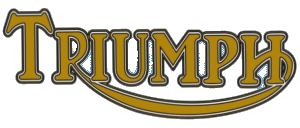

1887 The company was registered as the New Triumph Co. Ltd., now with financial backing from the Dunlop Tyre Co. In that year, Bettmann was joined by another Nuremberg native, Mauritz Schulte.
1888 Schulte encouraged Bettmann to transform Triumph into a manufacturing company, and in 1888 Bettmann purchased a site in Coventry, using money lent by his and Schulte's families.
1889 The company began producing the first Triumph-branded bicycles in 1889.
1890s Motorcycle manufacture began in Coventry.
1908 Advert in 'The Times' for Triumph Motorcycles.
1912 Listed in Spennell's directory of Coventry as Cycle Manufacturers.
1896 Triumph opened a subsidiary, TWN (Triumph Werke Nuremberg) [1], a German subsidiary for cycle production in his native city.
1897 The company was registered on 12 February, as the New Triumph Cycle Co, to acquire the business of the Triumph Cycle Co. In June, the name was changed to the Triumph Cycle Co.
1898 Triumph decided to extend its own production to include motorcycles and by 1902, the company had produced its first motorcycle - a bicycle fitted with a Belgian-built engine. In 1903, as its motorcycle sales topped 500, Triumph opened motorcycle production at its unit in Germany. During its first few years producing motorcycles, the company based its designs on those of other manufacturers. In 1904, Triumph began building motorcycles based on its own designs and in 1905 produced its first completely in-house designed motorcycle. By the end of that year, the company had produced more than 250 of that design.
1902 Branched out into making Triumph motorcycles at their works in Much Park Street. At first these used bought-in engines but the business took off and they soon started making their own and, in 1907, expanded into a new factory in Priory Street, taking over the premises of a spinning mill.
1902 The first Triumph motorcycle was known as the No. 1, a converted fitted with a Belgian-made 2.25bhp Minerva engine on the front tube. At the time, internal combustion technology was more advanced in continental Europe than it was in the UK, and Mauritz Schulte, the designer (and co-owner of the Triumph Cycle Company), happened to be a perfectionist. The Minerva was felt to be the best engine for the purpose.
Report from the 1903 Stanley Show
The Triumph motorcycles will be shown at the Stanley. These will include 2.5 h.p. and 3 h.p. machines, and also a fore-carriage with water-cooled motor. The standard pattern machine is shown in the illustration. The motor is 70 by 76 mm. and provided with a Dunlop silencer and exhaust valve lifter. Twin accumulators with two-way switch and Bassee Michel coil are used. Transmission is by V belt. Wheel base is extra long and girder forks are fitted, the weight comes out at 120 lbs.
The 3 h.p. machine designed for heavy riders and hilly countries has a motor 75 by 80 mm. and Longuemare carburetter. Transmission is by a V belt. Two accumulators and double switch are fitted. The contact is an improved make and break pattern. The motor is fitted a low central position, and a rear band brake and front rim brake are provided. The wheels are built up with extra stout spokes and fitted with 26 by 2.25 in. tyres. The petrol capacity is equal to 1.5 gallons, All control levers have ratchet adjustment. The fore-carriage motor will be provided with a honeycomb radiator.
The Motor magazine, 18th November 1903
1907 After the company opened a larger plant, production reached 1,000 motorcycles. Triumph had also launched a second, lower-end brand, Gloria, produced in the company's original plant. [2]
World War I. The outbreak of World War I proved a boost for the company as production was switched to support the Allied war effort. More than 30,000 motorcycles - among them the Model H Roadster aka the "Trusty Triumph," often cited as the first modern motorcycle - were supplied to the Allies. Major orders for the 550cc Model H came from the British Army during World War I and, by 1918, they were Britain's largest motorcycle maker.
Bettmann and Schulte fell out after the war, with Schulte wishing to replace bicycle production with automobiles.
1919 Mauritz Schulte left Triumph after conflicting opinions with Siegfried Bettman, with a 'Golden Handshake' of £15,000. Schulte believed that Triumph should concentrate on car production, Bettman strongly disagreed. The successor to Mauritz Schulte as General Manager, was Colonel Claude Vivian Holbrook, who worked for the War Office during World War 1 as a motorcycle procurement officer.
c1921 Triumph Motor Co formed
By the mid-1920s Triumph had grown into one of Britain's leading motorcycle and car makers, with a 500,000 square feet plant capable of producing up to 30,000 motorcycles and cars each year.
In 1932, Triumph sold off its bicycle manufacturing facility to Raleigh.
1933 Triumph had been struggling financially, and Bettmann had been forced out of the chairman's spot and he retired completely in 1933.
1936 The company hit financial problems however and in 1936 the Triumph motorcycle businesses were sold to Jack Sangster of Ariel to become the Triumph Engineering Co.
See also Triumph History
Source: Graces Guide
Notes
1. Graces gives the name of the company as "Orial TWN (Triumph Werke Nuremberg)". This may be an error, although they did use the Orial name some decades later. Wikipedia (EN) gives the same information, but with no explanation as to where the "Orial" name originated. Ian Chadwick states that Orial TWN was established in 1903.
2. The "Gloria" name was certainly used for Triumph's economy bicycles, and for sidecars from around 1912, but there is little evidence that they used it for motorcycles.
The onlinebicyclemuseum.co.uk site has an article on the Gloria which includes news excerpts and adverts from the era, none of which mention motorcycles.
If you have a query or information about Triumph motorcycles please contact us